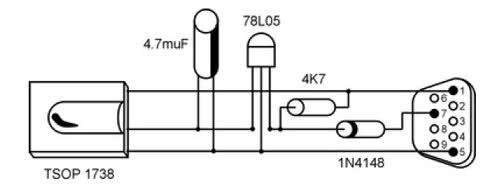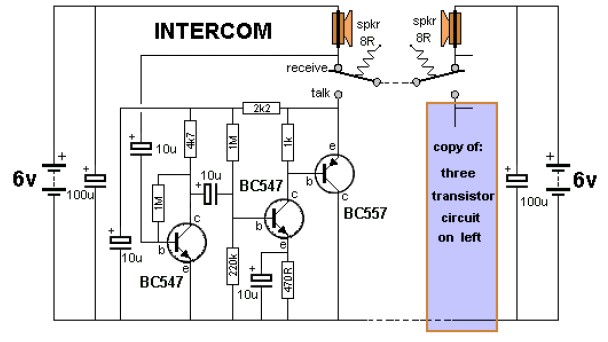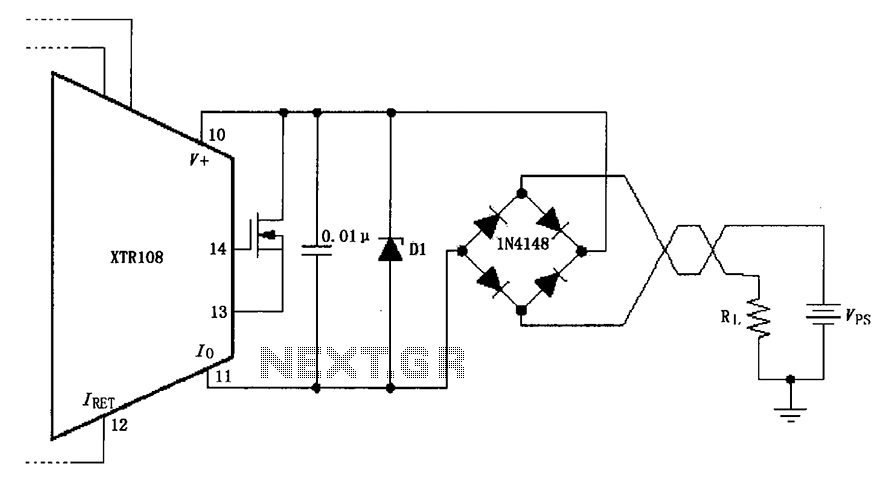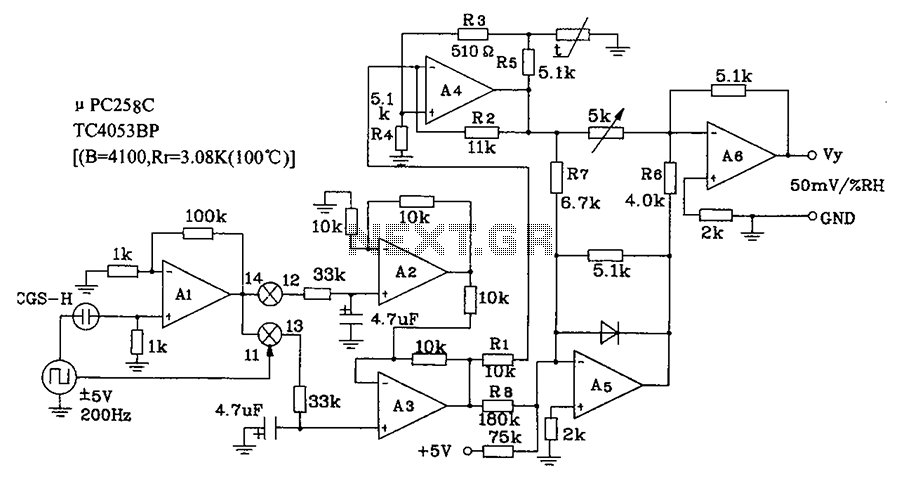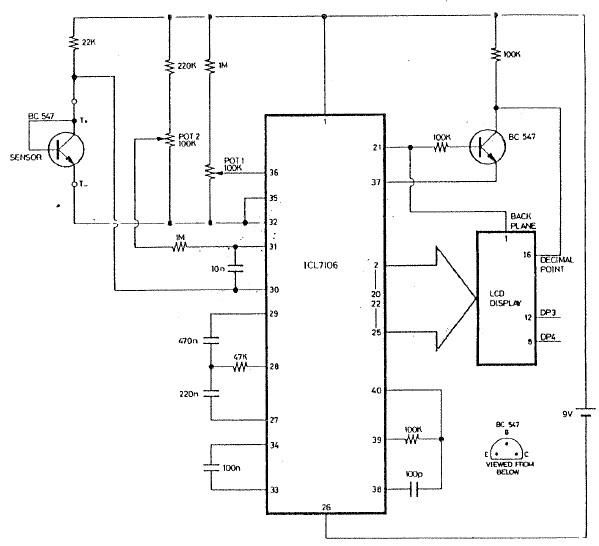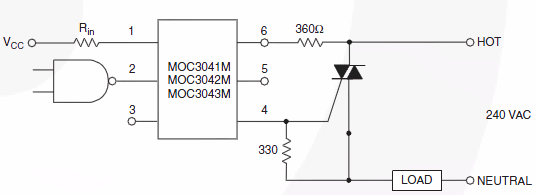
AT91SAM7S circuit minimum components
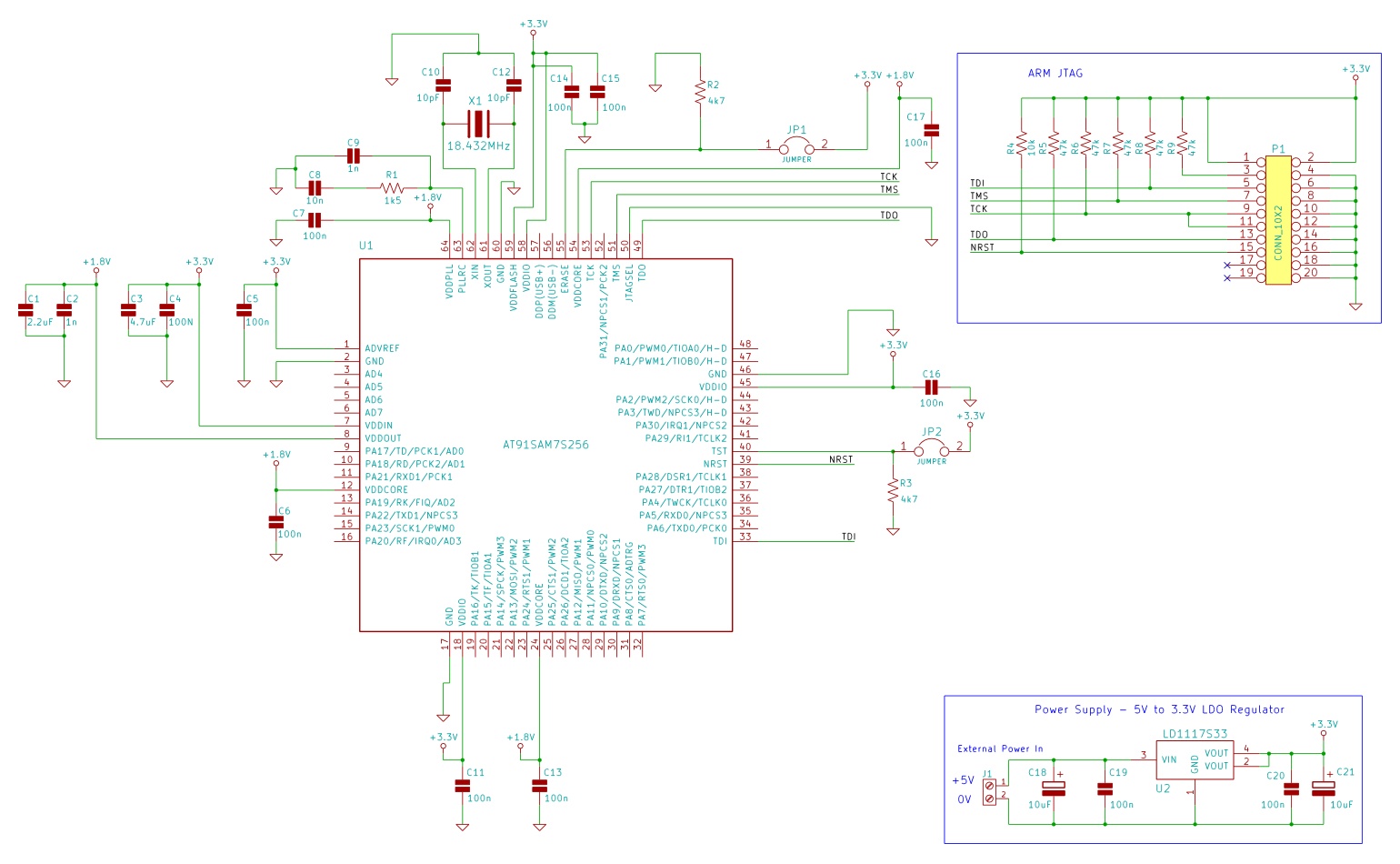
The minimum number of supporting components required to build a circuit using AT91SAM7S microcontrollers. This example uses the AT91SAM7S256 ARM7 microcontroller.
To construct a circuit utilizing the AT91SAM7S256 ARM7 microcontroller, a minimal set of supporting components is essential to ensure proper functionality and performance. The core of the circuit is the AT91SAM7S256, which is a 32-bit microcontroller based on the ARM7 architecture.
The basic components required for the circuit include:
1. **Power Supply**: A stable power supply is critical. The microcontroller operates typically at 3.3V, requiring appropriate voltage regulation to ensure reliable operation.
2. **Decoupling Capacitors**: These capacitors are placed close to the power pins of the microcontroller to filter out noise and stabilize the power supply. A common practice is to use a combination of a 100nF ceramic capacitor and a larger electrolytic capacitor (e.g., 10µF) in parallel.
3. **Crystal Oscillator**: To provide the clock signal for the microcontroller, a crystal oscillator (typically 12MHz or 16MHz) is necessary. This oscillator must be accompanied by two load capacitors connected to ground, as specified in the crystal's datasheet.
4. **Reset Circuit**: A reset circuit is crucial for initializing the microcontroller. This can be achieved using a simple resistor-capacitor (RC) network connected to the reset pin, ensuring the microcontroller starts in a known state upon power-up.
5. **Programming Interface**: For development and debugging purposes, a programming interface such as JTAG or SWD (Serial Wire Debug) is often included. This requires specific pins on the microcontroller to be connected to a suitable programmer.
6. **I/O Connections**: The microcontroller has multiple GPIO (General Purpose Input/Output) pins that may require pull-up or pull-down resistors depending on the application. These resistors help define the default state of the pins when not actively driven.
7. **Optional Components**: Depending on the application, additional components such as LEDs for status indication, sensors, or communication interfaces (like UART, SPI, or I2C) may be incorporated into the circuit design.
By ensuring these components are correctly integrated into the circuit, optimal performance and functionality of the AT91SAM7S256 microcontroller can be achieved, facilitating the development of various applications ranging from simple control systems to more complex embedded solutions.The minimum number of supporting components required to build a circuit using AT91SAM7S microcontrollers. This example uses the AT91SAM7S256 ARM7 microcontroller.. 🔗 External reference
To construct a circuit utilizing the AT91SAM7S256 ARM7 microcontroller, a minimal set of supporting components is essential to ensure proper functionality and performance. The core of the circuit is the AT91SAM7S256, which is a 32-bit microcontroller based on the ARM7 architecture.
The basic components required for the circuit include:
1. **Power Supply**: A stable power supply is critical. The microcontroller operates typically at 3.3V, requiring appropriate voltage regulation to ensure reliable operation.
2. **Decoupling Capacitors**: These capacitors are placed close to the power pins of the microcontroller to filter out noise and stabilize the power supply. A common practice is to use a combination of a 100nF ceramic capacitor and a larger electrolytic capacitor (e.g., 10µF) in parallel.
3. **Crystal Oscillator**: To provide the clock signal for the microcontroller, a crystal oscillator (typically 12MHz or 16MHz) is necessary. This oscillator must be accompanied by two load capacitors connected to ground, as specified in the crystal's datasheet.
4. **Reset Circuit**: A reset circuit is crucial for initializing the microcontroller. This can be achieved using a simple resistor-capacitor (RC) network connected to the reset pin, ensuring the microcontroller starts in a known state upon power-up.
5. **Programming Interface**: For development and debugging purposes, a programming interface such as JTAG or SWD (Serial Wire Debug) is often included. This requires specific pins on the microcontroller to be connected to a suitable programmer.
6. **I/O Connections**: The microcontroller has multiple GPIO (General Purpose Input/Output) pins that may require pull-up or pull-down resistors depending on the application. These resistors help define the default state of the pins when not actively driven.
7. **Optional Components**: Depending on the application, additional components such as LEDs for status indication, sensors, or communication interfaces (like UART, SPI, or I2C) may be incorporated into the circuit design.
By ensuring these components are correctly integrated into the circuit, optimal performance and functionality of the AT91SAM7S256 microcontroller can be achieved, facilitating the development of various applications ranging from simple control systems to more complex embedded solutions.The minimum number of supporting components required to build a circuit using AT91SAM7S microcontrollers. This example uses the AT91SAM7S256 ARM7 microcontroller.. 🔗 External reference
